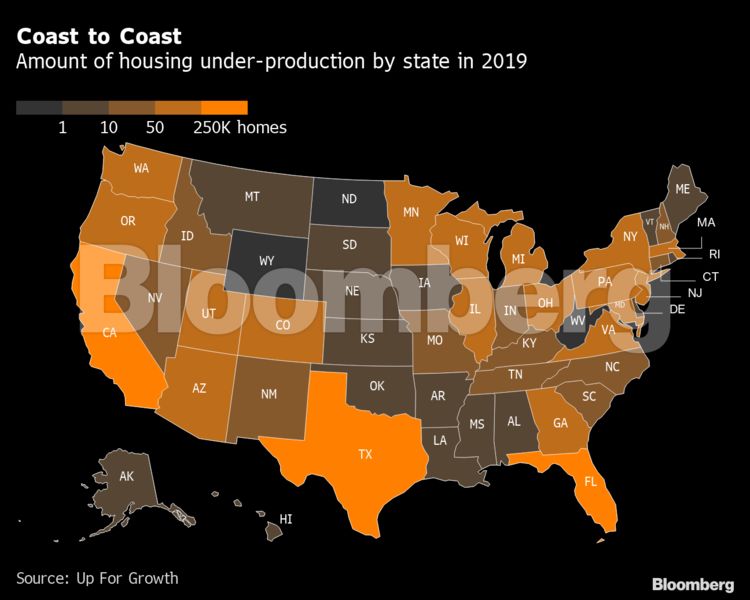California is the prime example of a housing market gone awry. Decades of underbuilding led to soaring prices and the biggest deficit of homes in the US.
But in the years before the pandemic, the crisis largely plateaued in the Golden State while it accelerated elsewhere, according to research released Thursday by Up for Growth, a network of industry groups, academics, public officials, environmental and racial-justice organizations working to solve the US housing shortage.
In Texas, the deficit rose nearly threefold from 2012 and 2019, to 322,000 homes. In Arizona and Georgia, which had little in the way of a housing shortage a decade ago, it surged 14 and 27 times, respectively. All together, the US needed almost 3.8 million homes in 2019, according to the analysis.

The data underscore how the geography of the nation’s housing shortage was changing going into the pandemic, becoming a coast-to-coast problem. It also explains why many people moving during the past two years have encountered tight housing markets almost wherever they’ve gone.
“The pandemic, if anything, exacerbated supply challenges, because you had a large portion of the workforce that was able to telework and they moved to other places,” said Caitlin Sugrue Walter, vice president of research for the National Multifamily Housing Council and a member of Up for Growth’s advisory council. “These places were already showing up undersupplied.”
The nation’s housing shortage has taken on added urgency this year as soaring rents contribute to the fastest inflation in decades. The Biden administration in May unveiled a plan to address those rising costs with a raft of measures aimed at clearing away barriers to supply and getting more building going.
Little relief may be coming soon. The Federal Reserve’s interest rate hikes have led to a steep climb in mortgage rates. That has started to cool home-purchase demand, but likely pushed some potential buyers back into the already-tight rental market, where costs are soaring.
“If we don’t solve this deficit, particularly now with other headwinds, America’s housing underproduction is likely to get worse,” said Mike Kingsella, chief executive officer of Up for Growth. “More and more folks will have to drive farther and farther to find housing that they can afford.”
That contributes to traffic congestion and makes it harder to address climate change, he said. And it can limit people’s access to better jobs. State and local governments are also harmed, Kingsella said, because producing too little housing means they may collect less property-tax revenue.








